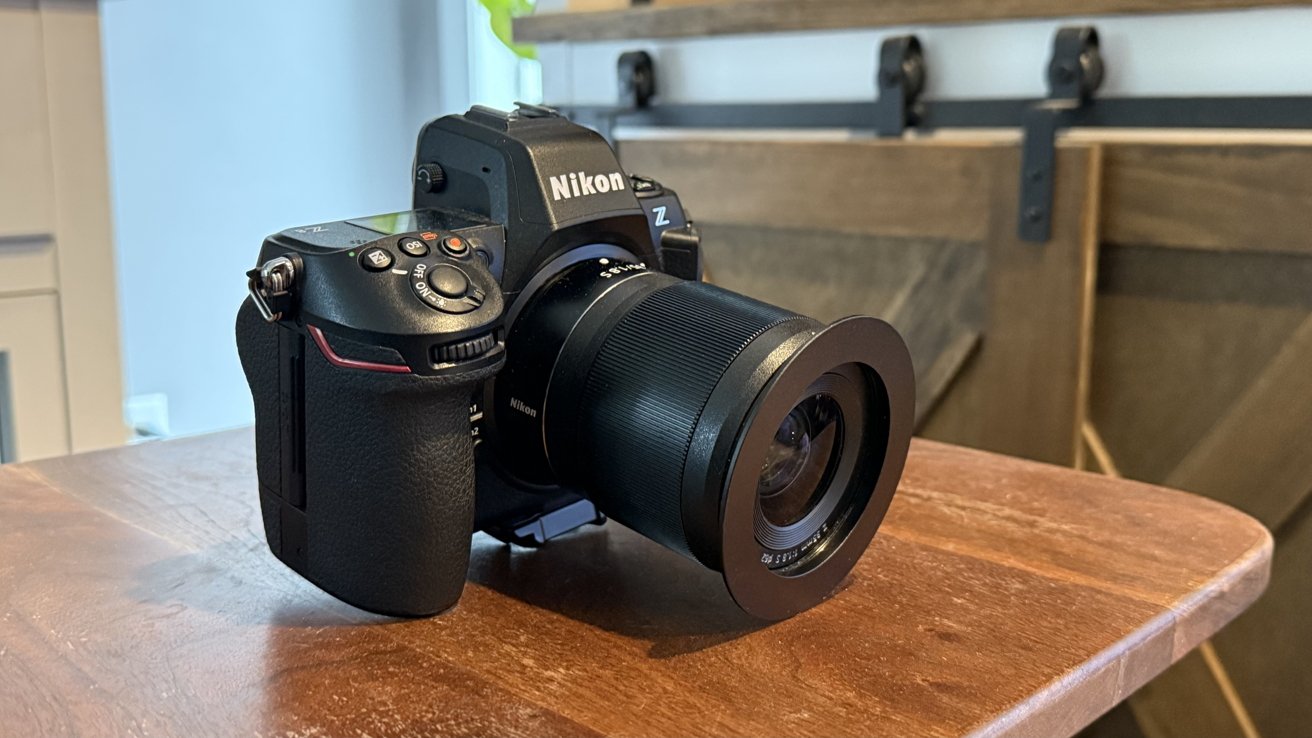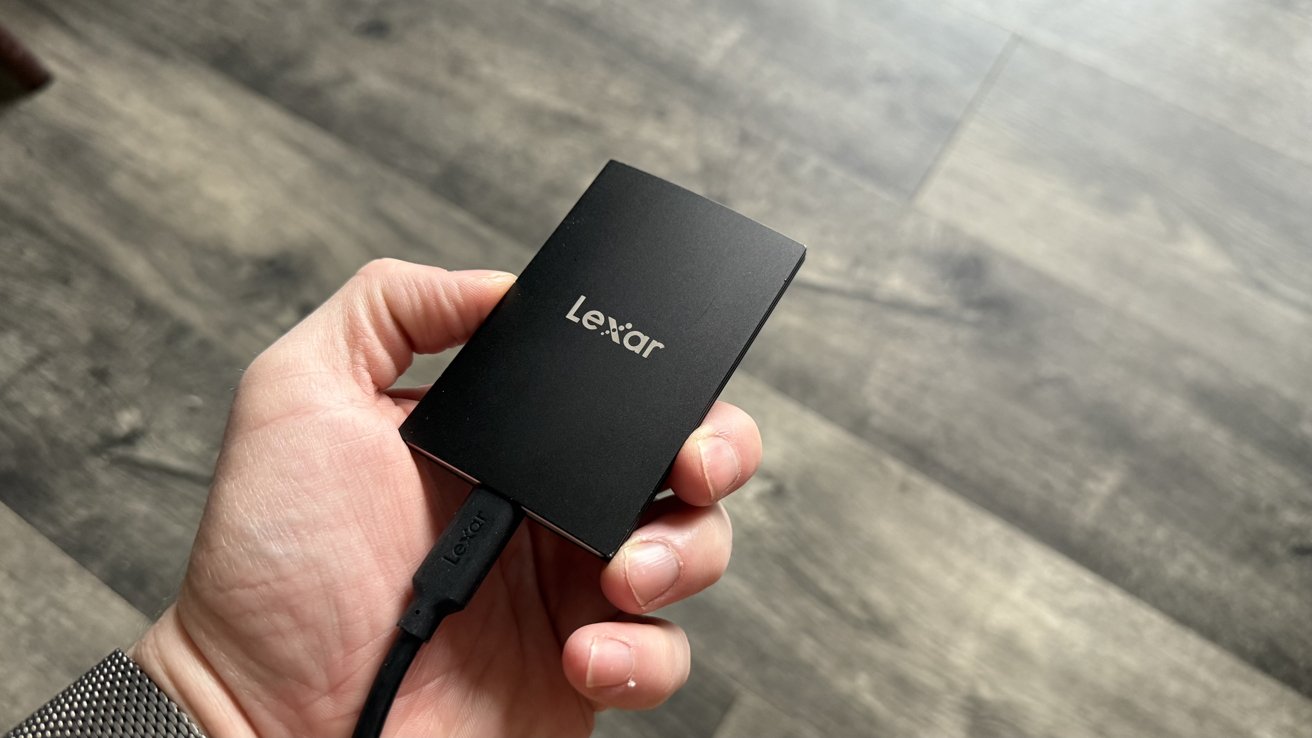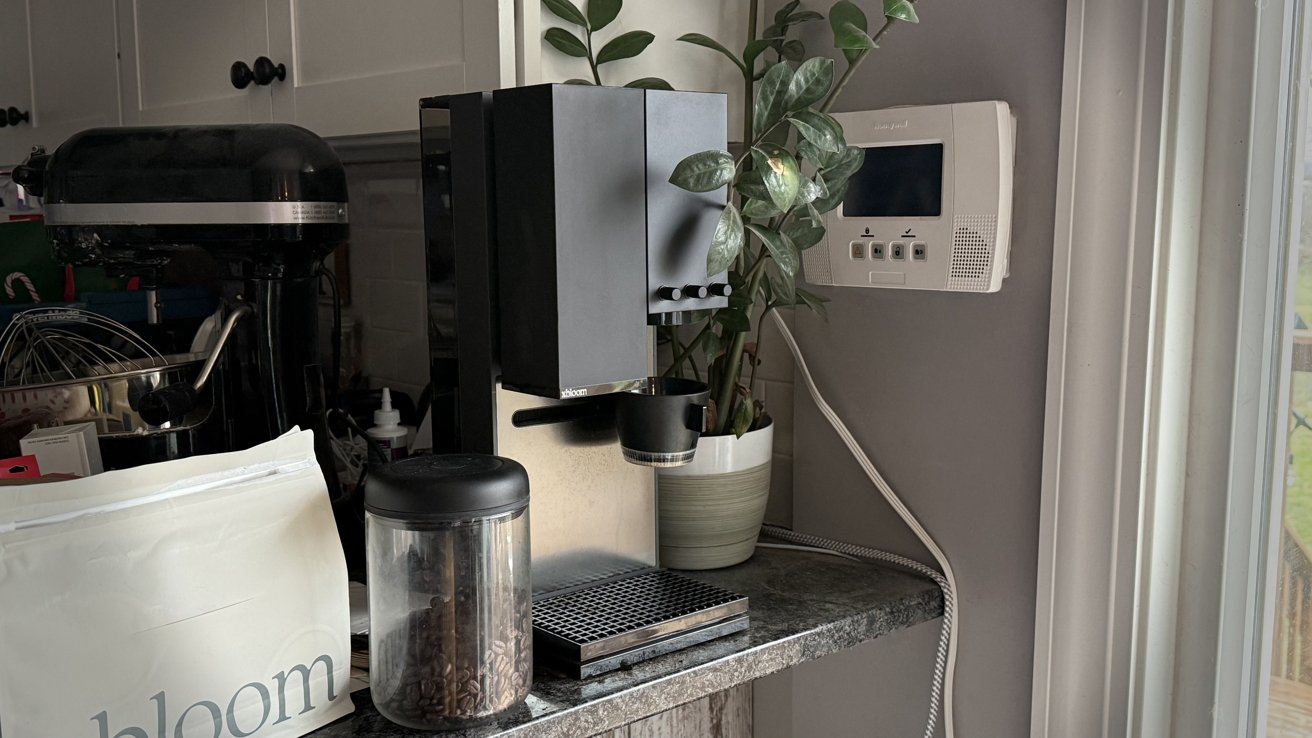Here’s how a mountain of tech products come together to help AppleInsider’s Andrew O’Hara keep up with the demanding and growing needs of Apple-focused video production.
Here at AppleInsider, most of my work revolves around our video production as well as covering the occasional news and writing reviews. Most of my time is spent in the production studio, but I’m bad at staying put.
I’m always moving around, which dictates which kind of gear I use. For example, while I drool over the New Mac mini or even the yet-to-be-updated Mac Studio, I use an M3 Max 16-inch MacBook Pro due to its portability.
Here’s what other equipment I use to make it through an average workday.
xBloom smart coffee maker
I don’t mean to be a cliche tech writer, but my day is fueled — and refueled — by coffee. I’ve tested out a lot of coffee-related gadgetry over the years but am currently fond of and relying on the xBloom smart coffee maker.
I’ve always loved the convenience of pod-based coffee machines. I could never get behind a Keurig because the coffee always tasted watery to me and we do have a Nespresso for pulling espresso shots.
When it comes to coffee though, I often used a pour over. Until more recently when I started using the xBloom.
It still can use pods, which you can order directly from the company and many are roasted on-demand when you order. They are full beans rather than pre-ground and come in a paper super so they’re entirely compostable.
If you don’t want to use pods though, you can use your own beans. This is great as my wife and I love to travel and try different coffee shops and bring beans home.
The bottom of the machine has a scale so you can weigh out your beans, before they’re poured into the top grinder. You load up your recipe from the app or an NFC-based card, and off it goes.
It will adjust the grind based on the recipe, as well as the water temperature, bloom duration, and more. It takes only a few moments to make an excellent pour over cup off coffee, which I do liberally throughout the day.
Nikon Z8
While I do plenty of writing, much of my time is focused on video production. Writing the script on my iPad or Mac, shooting in the ready-to-be-remodeled studio, and editing in Final Cut Pro.
Recently, our video strategy here at AppleInsider has expanded, from not only producing several full-length long-form videos on YouTube each week, but a regular supply of short-form content for the likes of Instagram Reels, YouTube Shorts, and TikTok — ya know, if it isn’t banneda.

My Nikon Z8 mirrorless camera with a tripod quick release plate, a 35mm f/1.8 lens, and a mount for the Elgato teleprompter
For most of our footage, I shoot with my Nikon Z8 mirrorless camera. I know many video folks have moved to the Sony line, and while I’ve been tempted, I’ve always loved Nikon.
I grew up shooting on a Nikon film camera and developed my shots in our basement in our own darkroom my dad had set up. So it’s part nostalgia, part familiarity, and part the fact I have a lot of glass for the Nikon system.
It’s at least a modern camera with the ability to shoot vertically and can transmit footage wirelessly to my iPhone. It works great and has only gotten better with some recent software updates.
When creating vertical short-form content I still shoot footage on my iPhone, but I’m getting a good routine of filming some extra talking head A-roll while the camera is set up after filming a long-form video.
Lexar mobile SSD
Thinking of a third device in my daily workflow, I had plenty of options. Especially Apple products.
I swear by my Apple Watch and rely on it for messages and alerts while I’m filming and not looking at Slack on my Mac. My iPhone 16 Pro is used for filming, messaging, and everything in between.

The Lexar portable SSD is so incredibly tiny and fast yet has 4TB of storage to work on my iPhone, iPad, and Mac for video editing and storage
Apple TV 4K is constantly one of my favorite devices and not only do it use it every day, but it’s my primary Home Hub for my smart home. Of course, there’s also my MacBook Pro and iPad where so much work gets done.
I wanted to choose a non-Apple product though, so I landed on my Lexar mobile SSD. It’s one of many, many external storage devices I use and due to its size, has become my go-to as of late.
It’s only a few millimeters thick, runs over USB-C, and has a 4TB capacity which is great for video editing. When I sit at my desk, I sync back up with a larger SSD array, but for mobile work, this is where I do it.
I can edit in Final Cut Pro directly off this external disk, keeping my internal SSD freed up. It’s very fast, easily portable, and has been very reliable.
My other portable drives include the equally excellent LaCie mobile SSD and ever-popular Samsung T7 Shield but since they don’t have as much capacity, I don’t tap into them as frequently.
I love the flexibility to work from anywhere, whether I’m in the studio, outside in the sun, or even remotely while at a trade show. Like CES in January.
Reflecting on my daily workflow, there’s a lot of unsung gear I use. I mentioned a lot throughout this but a lot still gets overlooked.
For example, my CFExpress Type B card reader, my blazing mesh routers, the massive key light used in filming, or the Elgato teleprompter William wonderfully reviewed are all crucial to the job. It’s a lot, but it all lends itself well to a modular, mobile, modern video production workflow.





